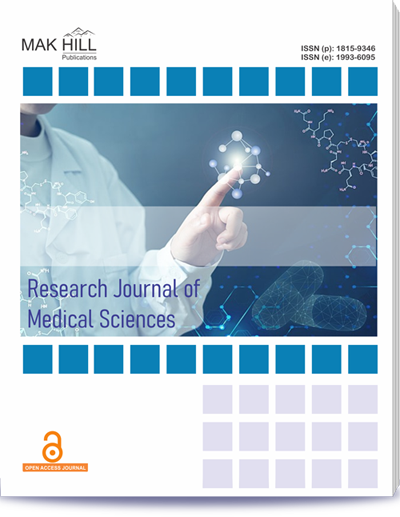
Research Journal of Medical Sciences
ISSN: Online 1993-6095ISSN: Print 1815-9346
Abstract
To study the impact of early postnatal weight gain on the development of retinopathy of prematurity (ROP) and need for ROP treatment. Prospective observational study of premature infants who underwent ROP Screening SNCU in Himachal Pradesh, India between August 2021 and July 2022. The average birth weight (BW) of 122 babies was 1803.87 g (range: 950-4500), with gestation (GA) 34 weeks (range: 28-40). Fifty-six infants weighed less than 1500 g, 5 were <1000 g. Two infants treated for Type 1 ROP weighed > 2 kg. Mean weight loss by day 7 was 2.6% of BW (range: -23.3 to + 35). By day 14 weight gain of 2.1% of BW (range: -27 to 43), further gained 7% of BW (range: -22 to +50) by day 21 and 11% of BW (range: -20 to +58) by day 28 of life. The ROC curve revealed discharge weight in infants had the highest association of developing ROP (Area under curve 0.708). We also observed that with increase in gestation, chances to develop treatable ROP decrease. Type 1 ROP was present in 2/4 (50%) below 28+6 weeks, 3/11(27%) between 29 and 30+6 weeks, 25/48(52%) between 31-33+6 weeks and 9/59 (15.2%) among infants with gestation >34 weeks. Lower GA and poor weight gain at discharge are significantly associated with the need for treatment in infants with ROP.
How to cite this article:
Mannat Nayyar and Mangla Sood. Impact of Early Postnatal Weight Gain on Retinopathy of Prematurity.
DOI: https://doi.org/10.36478/10.59218/makrjms.2023.845.849
URL: https://www.makhillpublications.co/view-article/1815-9346/10.59218/makrjms.2023.845.849